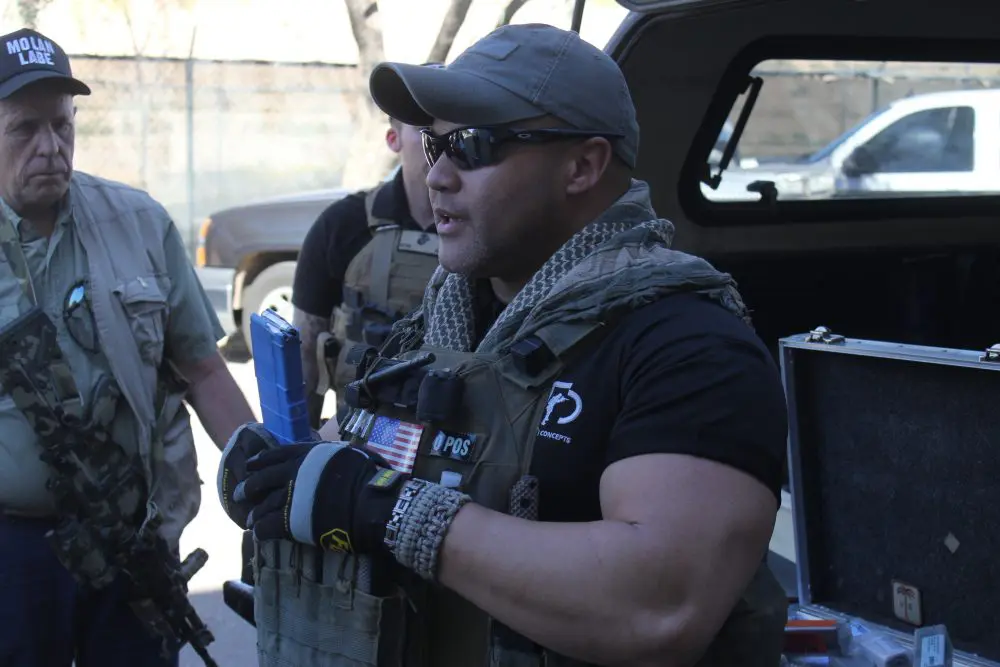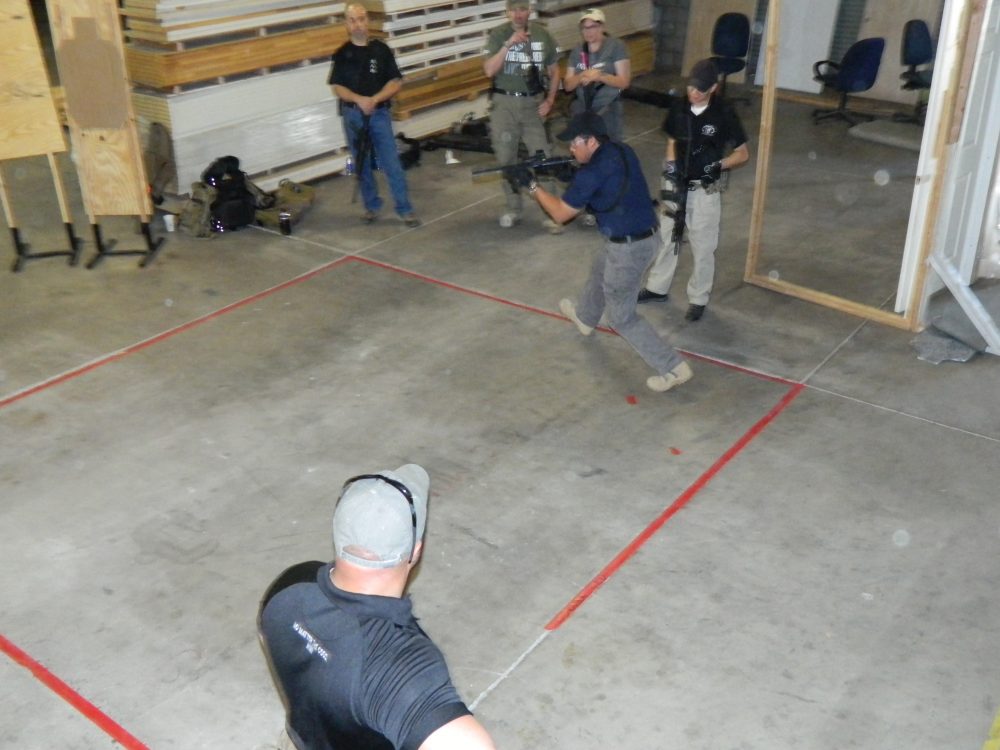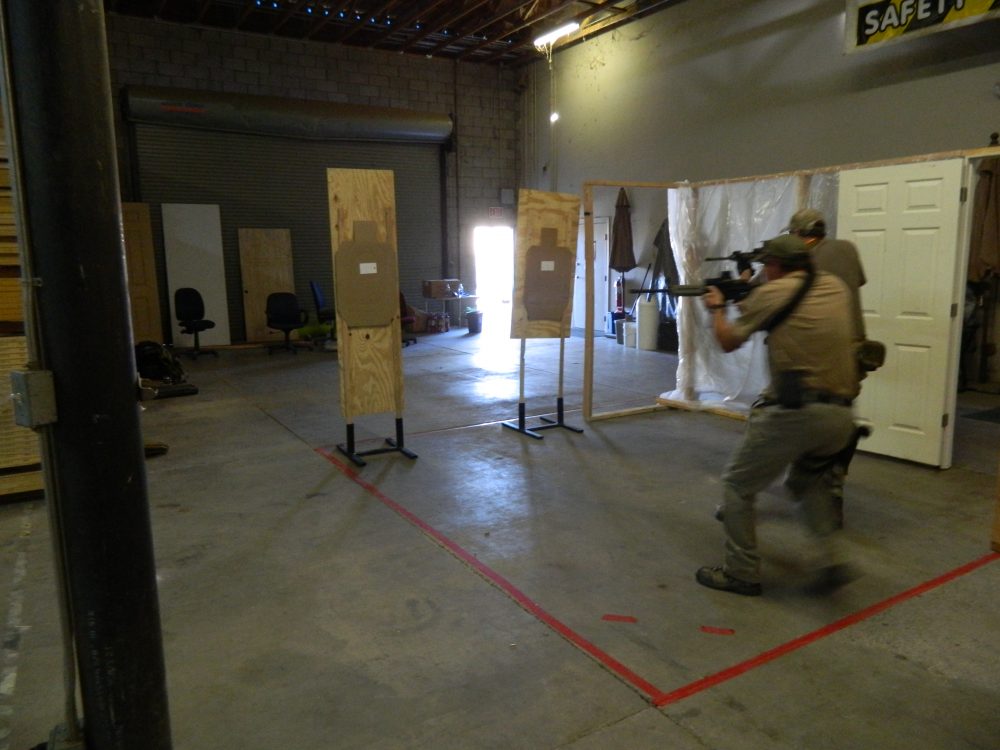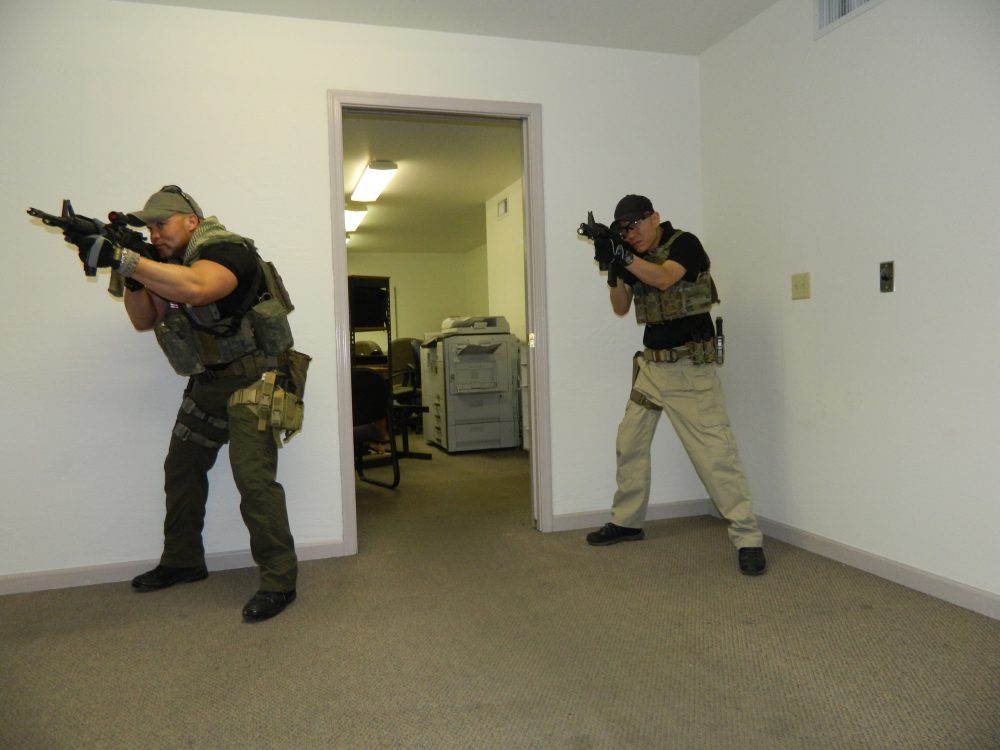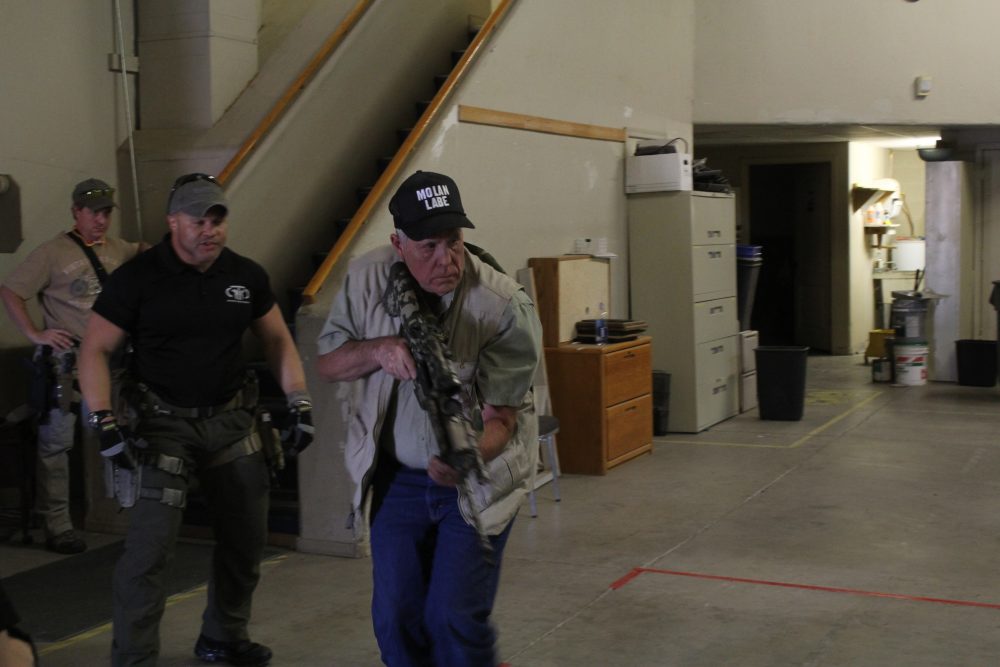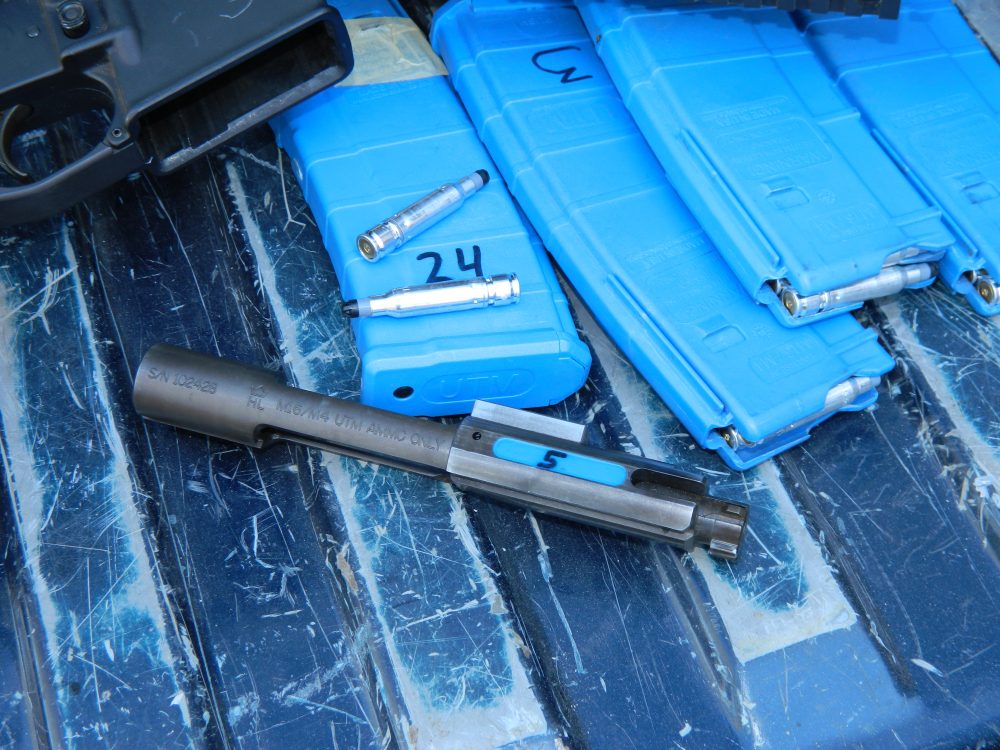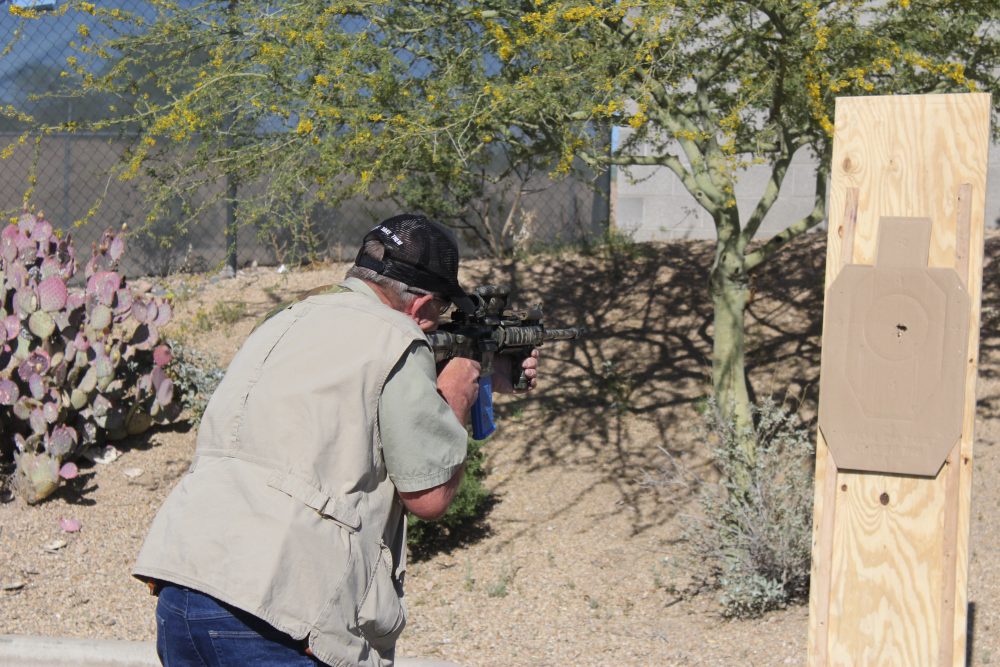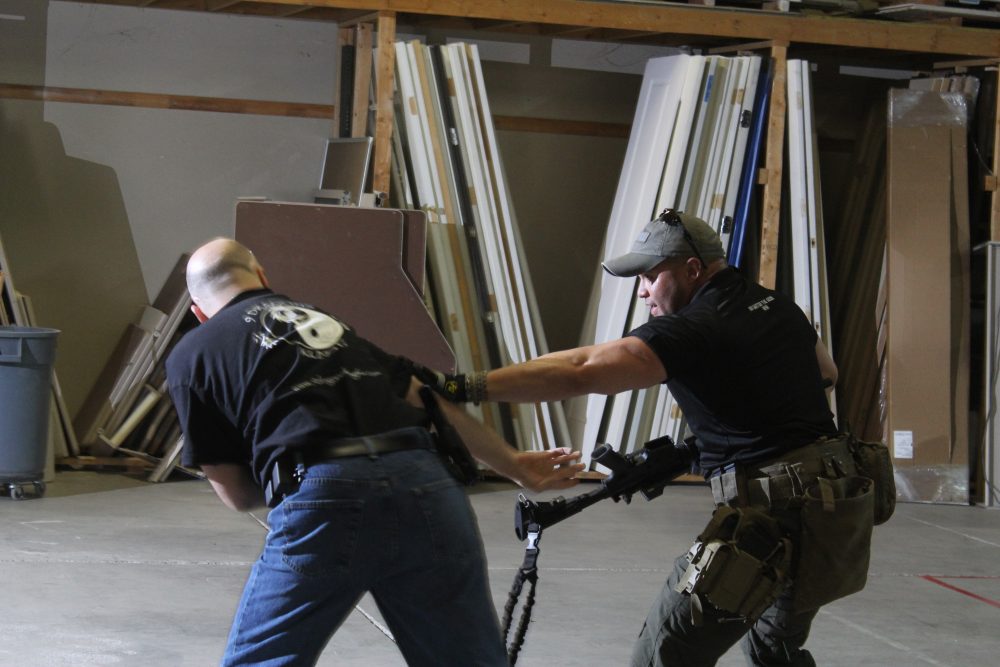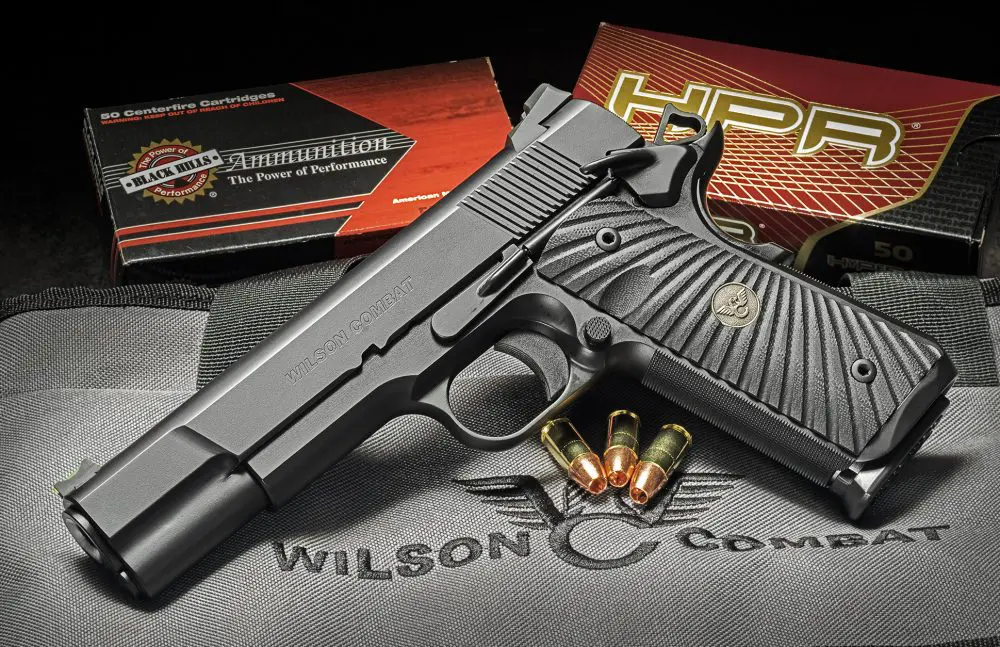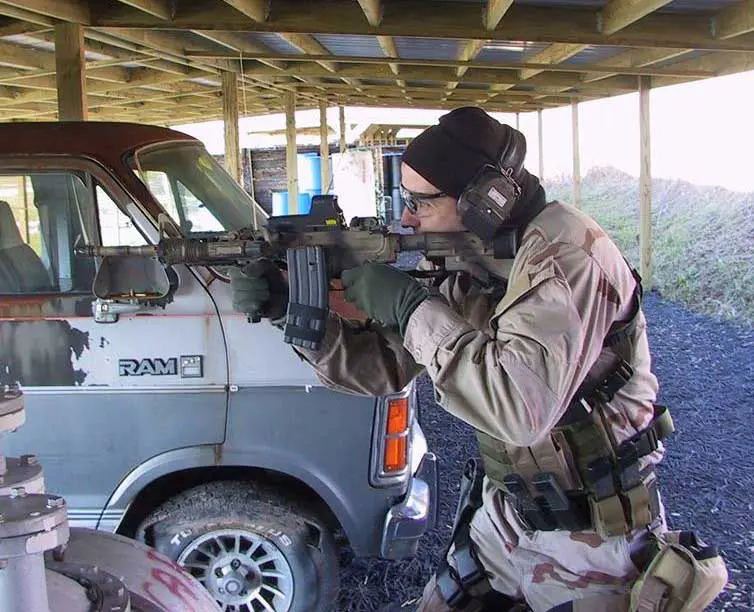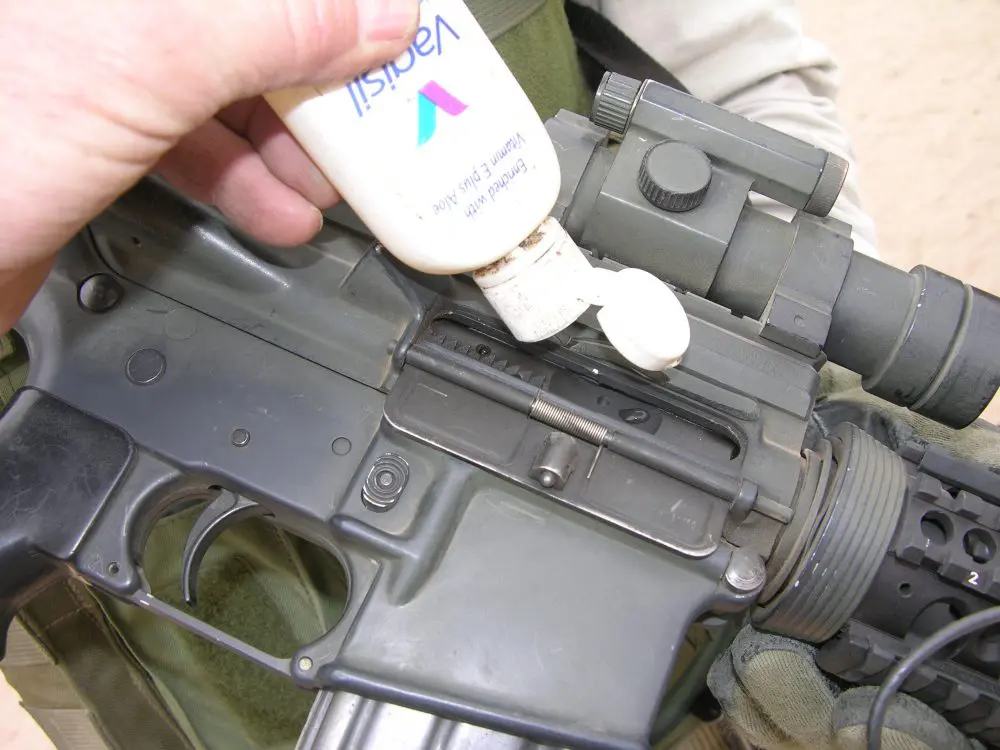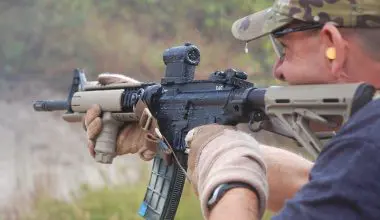No two ways about it: making entry into a room or building occupied by a hostile person(s), especially if conducted by one person, is dangerous.
When in your own home, or anywhere else for that matter, the best advice anyone can offer is to stay put and let the bad guy come to you.
However, there may come a time when you have no choice but to go on the offensive. One example is the proverbial children at the other end of the home who must be protected when an intruder enters.
Most reading this are probably familiar with the concept of slicing the pie when searching for a bad guy: slowly and systematically looking into an area and seeing as much as possible before entering. In my mind, while this is a good technique for peace officers, for the most part it does not apply to private citizens.
Before you burn my phones up and crash my computer with emails, let me explain. As mentioned earlier, if you as a private citizen are not in immediate danger, there is no need to go on the hunt. But if you must move to protect your children or someone else from an immediate attack, this is not the time to move slowly, as lives may hang in the balance. It is the time for dynamic, decisive movement.
As Anderson watches, Cesar Teran performs entry at half speed.
Table of Contents
COUNTER THREAT CONCEPTS
I recently traveled to Phoenix to attend an eight-hour block of instruction with Counter Threat Concepts (CTC). The premise of the class, titled CQB One, was that the average citizen may be forced to take action during a critical incident such as a home invasion or active shooter situation. It was taught by CTC Lead Instructor Jesse Anderson.
As training has become a cottage industry, I always encourage folks to vet their instructors to be sure they understand the subject matter and do not simply parrot what another instructor has taught them. Anderson is the real deal.
Still entering the room, two students engage targets on the move. White 3×5-inch index cards indicated “shoot” targets.
Jesse served in the U.S. Army in several light infantry roles starting in 1987. He served eight years as a city police officer where he was assigned to patrol, narcotics task force, street crimes and SWAT. He was selected to serve in the U.S. Dept. of Energy SRT program and was an assault team member.
Anderson contracted overseas from 2004 to 2013. He operated on U.S. Dept. of State and Dept. of Defense missions ranging from PSD team member/leader to instructor in Iraq and Afghanistan. He also operated in Haiti during the 2010 earthquake crisis. He is a certified U.S. Dept. of State firearms tactics instructor, as well as holding numerous additional instructor certifications. His motto is, “No matter the odds, WIN!”
CTC Assistant Instructor Justin Ha assisted Anderson.
Anderson (left) and Justin Ha demonstrate making entry into a room.
INTO THE WAREHOUSE
The day started with a lecture and PowerPoint presentation by Anderson. This was not the usual “death by PowerPoint.” Anderson kept it lively by encouraging interaction with the class.
Jesse covered CQB fundamentals such as room clearing, actions at the entry point, and actions upon entry, as well as the qualities of surprise, speed and violence of action.
Loftco Inc., owned by Mike Lofton, is a large commercial residential framing and finish company in the Phoenix area. A supporter of training, Lofton allows CTC to use his large warehouse for courses. This helps Anderson keep his course prices affordable. In the Loftco warehouse, Anderson taped out several “rooms” for students to practice entry.
Hansen makes entry into taped-off “room” on a dry run. Photo: Rachel Fry
Anderson uses the crawl, walk, run philosophy of teaching. As such, each student began practicing entry by slowly going through their movements and added speed as they became more comfortable with the techniques being taught.
Many times good guys have been injured by bad guys who attacked them from very low or very high. Anderson repeatedly stressed that we look “Earth to heaven, heaven to earth, 360 degrees.”
Students used UTM bolts, magazines and shells for final drills. Dust cover cannot be closed on a UTM bolt, allowing instructor to see blue coloring that ensures it is not a live weapon.
ENTRY STRATEGIES
There are basically two types of doorways—corner-opening and center-opening. Most rooms inside a home are corner-opening rooms, with the longest wall of the room going to either the left or the right. A center-opening room has basically the same distance on either side of the door.
In the case of a corner-opening room, upon entering, Anderson teaches to first dominate the far corner on the hinge side of the door, as it’s the area that is the hardest to see into. Upon reaching the corner, depending on blind areas obstructed by furniture or other obstacles, you can either proceed 90 degrees along the wall to the next corner to further clear the room, or collapse your vision to the center of the room.
If two people are entering the room, the first person normally goes to the “danger” corner and the second person goes straight into the room to the far wall. Safety and sectors of fire were stressed, as was communication.
In the case of a center-opening room, the first man in has the option of going either to the left or the right, and either maintaining position in the first corner he comes to or going deep along a wall.
Anderson briefs students on using UTM. Photo: Rachel Fry
ULTIMATE TRAINING MUNITIONS
After numerous dry runs, actual walls and doors were erected in the training area and it was time for students to engage targets with Ultimate Training Munitions (UTM) rounds.
UTM offers an advantage over other training munitions in that no special guns are required, and only UTM rounds will fire. A further safety feature is that the dust cover will not close with a UTM bolt inserted, and an instructor can see the blue coloring on the special bolt at a glance, ensuring it is not a “live” weapon.
Students were given UTM bolts to place in their carbines, issued a blue UTM magazine and shells, and split into two-man teams.
Author verifies zero with the UTM ammo abd his mounted Aimpoint M4. Photo: Rachel Fry
My partner, Scott Buldiger, and I were the first team for the initial entry drill. I immediately picked up my threat target and placed two rounds center mass on it while on the move to my corner. However, despite Jesse stressing, “Earth to heaven, heaven to earth, 360 degrees” over and over, I didn’t immediately pick up another “shoot” target close to the floor and Scott did not have a shot at it—it took me only perhaps a second, but if it had been real bad guy, I could have been killed.
Learning occurred, and this is exactly the reason we should attend courses—so that mistakes made while training will hopefully not be repeated in the real world.
If you get the chance, I recommend training with Counter Threat Concepts.
When this student let his muzzle enter the room and didn’t follow up quickly, Anderson showed how this could result in a takeaway. Photo: Rachel Fry
Jesse Anderson served in the US. Army in several light infantry roles, and as a city police officer where he was assigned to patrol, narcotics task force, street crimes, and SWAT. He was selected to serve in the U.S. Dept. of Energy SRT program and was an assault team member. Overseas he operated on U.S. Dept. of State and U.S. Dept. of Defense missions ranging from PSD team member/leader, to an instructor in Iraq and Afghanistan. He holds numerous instructor certifications.
SOURCE:
Counter Threat Concepts
(702) 750-6953
www.facebook.com/counterthreatconcepts
